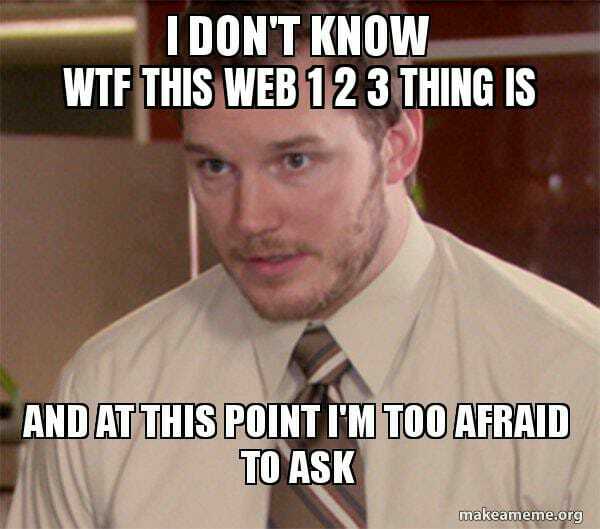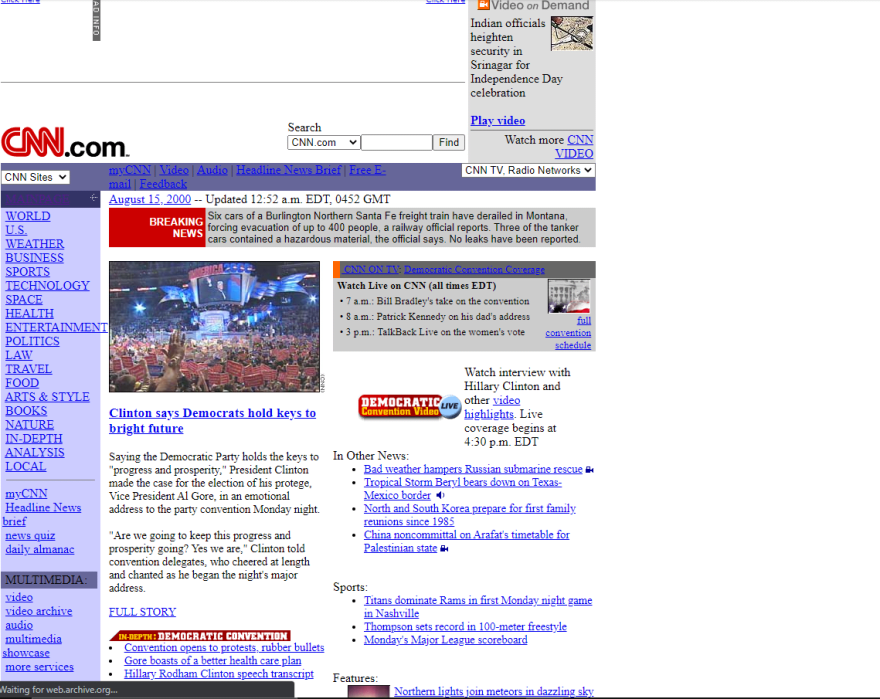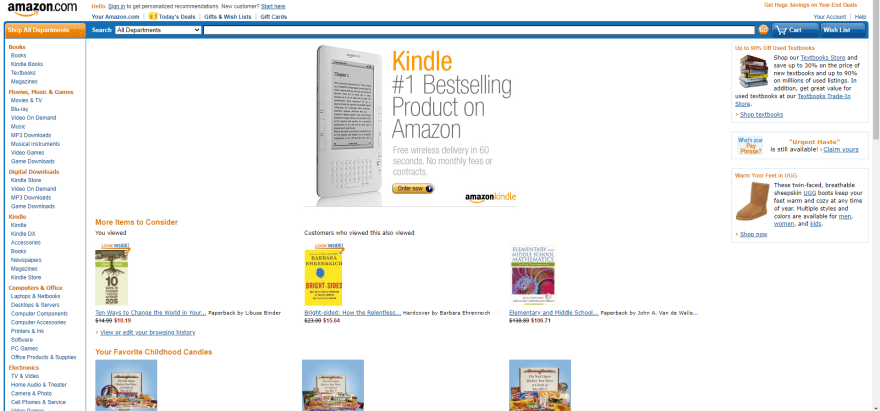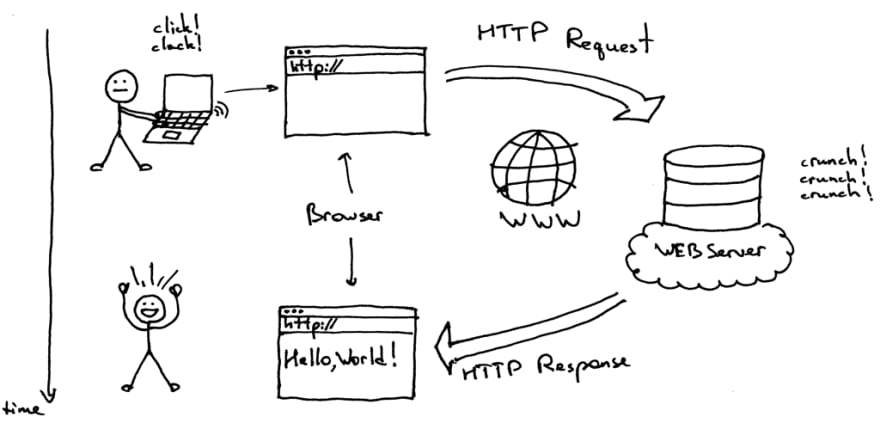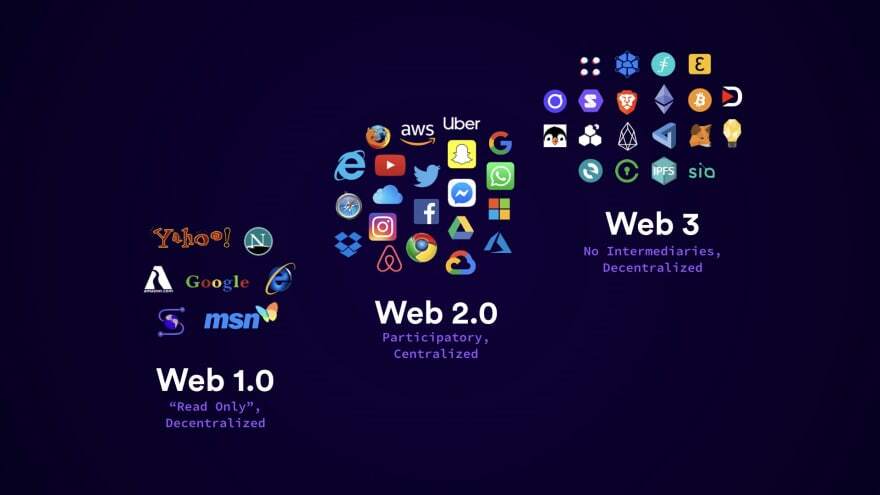Web 1.0, Web 2.0 & Web3 Explained

We can all agree that the web has changed dramatically over the years, both as a consumer and as a developer. Thanks to advancements in the web, producing attractive websites and applications has never been easier.
The purpose of this blog post is to explore the past of the web, as well as discuss the potential future of the web, i.e. web 3.0.
Web 1.0 Beta
The concept of hypertext predates the World Wide Web by several decades. However, almost all hypertext systems relied on local files. Tim Berners-Lee wished to develop a system that could work across networks, allowing individuals to link from one file on one machine to another file on another.
So in December 1990, he coded an app with Objective-C for his next computer system and named it world wide web.
WorldWideWeb was more than just a file-browsing application. It was both a browser and an editor.
You can check the first worldwideweb browser: https://worldwideweb.cern.ch/
Web 1.0
Web 1.0 was the first stage of the World Wide Web revolution, usually referred to as read-only web. Websites were informational and contained only static content that was hyperlinked together or in simple words there was no CSS, dynamic links, interactivity like logging in the users, comments on the blog posts etc.
The websites were built using Server Side Includes or Common Gateway Interface (CGI) instead of a web application written in a dynamic programming language such as Perl, PHP, Python or Ruby.
In the era of Web 1.0 i.e. from 1991 to 2004, users on the internet were consumers of content created by content creators.
Web 2.0
Web 2.0 from 2004 till now, is the second stage of the World Wide Web revolution, usually referred to as read-write web. Emphasis was given to user-generated content, ease of use, participatory culture and interoperability.
Some of the early platform based on web 2.0 are YouTube, Facebook, Amazon and so on. Due to CMS technologies such as WordPress, blogging, creating a ecommerce shop became extremely popular.
Web 2.0 brought about a fundamental shift, where people could share their perspectives, opinions, thoughts, and experiences through a variety of online tools and platforms.
Web 2.0 Disadvantages
Before looking at disadvantages let's see how a traditional web 2.0 application works.
A client(user) will make a HTTP request to the server and if everything is correct it will send back that webpage as a response.
A major flaw here is that all data is stored on a centralized server, controlled by the companies.
Facebook, Google, and Twitter began storing users data in their servers so that they can serve us better content through machine learning. This in turn would make us stay on their websites longer, therefore providing more ad revenue for these companies.
The companies eventually started selling our information to advertisers, which meant more money for them!
Facebook's data-sharing deals exposed
To summarize web 2.0 we can say that users are the product.
Web3
The web3 concept aims to create a decentralized, but secure, internet in which people can securely exchange money and information, without the need for middlemen or big tech companies.
Unlike Web 2.0 where data is stored in a single database or on a cloud provider, Web 3 applications either runs on blockchain, peer to peer nodes (servers).
In contrast to web 2.0, where you are the product, some people predict that in web3, you will be the content owner. According to web3 specialists, the corporation will be run by a decentralised group known as a DAO (Decentralized Autonomous Organization) removing the need of CEO’s and upper management in a company. Because your digital identity is not tied to your real identity in web3, you can be anonymous on the internet while still living your usual life.
An example of web3 application is Obsidian for Whatsapp, Odyessy, LBRY for YouTube, etc.
Is the buzz surrounding Web3 worth it?
Varied people have different perspectives on this; some believe it is a hoax created by cryptocurrency traders, while others believe it is a real deal. In my opinion, blockchain and web3 are still in an early stage of development and have a long way to go.
Some valid current arguments as of writings are:
- The compute and bandwidth problem to scale blockchain. Here is an link to the article about it https://www.stephendiehl.com/blog/web3-bullshit.html
- Mining is not eco-friendly and consumes a lot of energy to mine and verify transactions. Here's a Cambridge University article about it.
- Personal Opinion: Creating an unregulated social media platform, such as YouTube or Facebook, where users can add any data but it cannot be erased, could be a double-edged sword. On the one hand, you have freedom of speech, but on the other hand, there may be people publishing explicit content that cannot be deleted by anybody. This can be highly dangerous unless there is a means to check if the information contains explicit content by machine. I would love to hear your opinion on this issue.
References
- Fireship video on early web 1.0
- Fireship video on web 3.0
- Article about disadvantages of web 3.0
- Wikipedia web 2.0
I've been learning about blockchain for about two weeks now, and while I don't believe it is yet at the level where it can transform the entire web, I do find the idea and the conecpt of blockchian and decentralized web intriguing. This is the first post in a series on blockchain, so if you're interested in learning more about this technology, keep a watch out for my article next week, in which I'll explain blockchain using animated gifs.
For more such insights, checkout my blog website blog.webdrip.in
